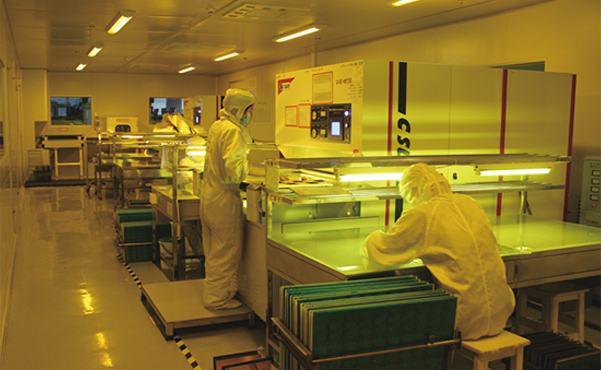"Lead-free" in PCB production refers to the use of materials and processes that do not contain or use lead (Pb) or lead-based compounds in the construction of printed circuit boards. This transition away from lead-based materials is driven by environmental and health concerns, primarily to reduce the potential risks associated with lead exposure, particularly in electronic waste (e-waste) disposal and recycling. This transition is driven by regulatory requirements, environmental concerns, and a commitment to more sustainable and safer electronics manufacturing and disposal practices.
<h1>Which processes need pb-free in pcb manufacturing and pcb assembly?
The transition to lead-free (Pb-free) processes in both PCB manufacturing and PCB assembly is essential for compliance with environmental regulations, reducing health risks, and ensuring the reliability and safety of electronic products. Here are the key processes in both PCB manufacturing and PCB assembly where lead-free practices are typically required:
For the PCB Manufacturing:
Solder Mask and Surface Finishes: The materials used for the solder mask and surface finishes applied to the PCB must be lead-free. This includes the solder mask material and the final finishes like HASL (Hot Air Solder Leveling) or ENIG (Electroless Nickel Immersion Gold). Lead-free finishes ensure that the PCBs are compatible with lead-free solder.
PCB Base Material: The base material of the PCB like FR-4 should not contain lead-based substances. Lead-free materials are used to manufacture the PCB substrates.

Component Lead Plating: Components used in PCB assembly, such as integrated circuits, resistors, capacitors, and other devices, must have lead-free plating on their leads or terminations. Lead-free plating ensures compatibility with lead-free soldering processes.
Soldering: In PCB assembly, the most crucial process that requires lead-free practices is soldering. This includes both surface mount technology (SMT) and through-hole assembly. Traditional lead-based solder is replaced with lead-free solder alloys. Common lead-free solder alloys include SAC (tin-silver-copper) and SnCu (tin-copper).
Solder Paste Preparation: The solder paste used in the soldering process must be lead-free. This paste consists of solder powder and flux and is applied to the PCB before components are placed on it. Lead-free solder paste is formulated with lead-free solder alloy particles.
Flux: Lead-free soldering often requires the use of lead-free flux, which is critical for proper wetting and bonding between the solder and component leads and PCB pads. The flux used should be compatible with the lead-free solder alloy.
Quality Control and Testing: Lead-free PCB assembly may require adjustments in quality control and testing procedures to ensure that solder joints are properly formed and meet the necessary standards for reliability and performance.
Rework and Repair: In cases where rework or repair is necessary, lead-free processes and materials must be used to maintain the integrity of the PCB assembly and its solder joints. This includes desoldering and resoldering components using lead-free solder.
Environmental and Regulatory Compliance: Compliance with regulatory standards, such as the Restriction of Hazardous Substances (RoHS) directive, is essential in lead-free PCB assembly. This includes ensuring that the finished electronic assemblies meet the specified lead-free requirements.
The use of lead-free soldering in medical PCBAs (Printed Circuit Board Assemblies) is primarily driven by safety, environmental, and regulatory considerations. Medical devices, which are critical to patient health and well-being, must adhere to stringent standards and requirements, and the transition to lead-free soldering aligns with these priorities. Here are some reasons why lead-free soldering is emphasized in medical PCBAs:
Patient Safety: Medical devices come into direct or indirect contact with patients. Lead is a toxic heavy metal, and exposure to lead can have serious health consequences, especially for vulnerable populations such as patients. Using lead-free solder helps ensure that the devices are free from lead contamination.
Environmental Responsibility: The electronics industry, including medical device manufacturing, is increasingly focused on environmental responsibility. Lead-free soldering reduces the environmental impact of electronic waste (e-waste) disposal and recycling. This is in line with global efforts to minimize hazardous substances in products and reduce the pollution of electronic waste streams.
Regulatory Compliance: Medical devices are subject to strict regulatory standards, including the Restriction of Hazardous Substances (RoHS) directive in the European Union and similar regulations worldwide. RoHS restricts the use of certain hazardous substances, including lead, in electronic products. Compliance with these regulations is mandatory for medical device manufacturers to access global markets.
Interchangeability and Compatibility: Lead-free soldering ensures that medical devices remain compatible with global supply chains and market requirements. Components and PCBAs manufactured with lead-free processes are more likely to meet current and future regulatory standards and are easier to integrate into global healthcare systems.
Supply Chain Consistency: Using lead-free soldering allows for a more consistent and streamlined supply chain. Manufacturers can source lead-free components and materials more readily, reducing the risk of supply chain disruptions due to regulatory changes or environmental concerns.
Longevity and Reliability: Medical devices often have long lifecycles and must operate reliably over extended periods. Lead-free soldering can provide the same or improved levels of reliability as traditional lead-based solder, ensuring the long-term performance and safety of medical devices.
Risk Mitigation: Lead-free soldering mitigates the potential risks associated with lead contamination during the manufacturing process. Ensuring lead-free soldering processes helps prevent human errors that could introduce lead into the assembly.
In summary, lead-free soldering is a crucial component of manufacturing medical PCB assembly to ensure patient safety, comply with regulatory standards, reduce environmental impact, and maintain the reliability and longevity of medical pcb devices. This transition aligns with broader industry trends and global efforts to create safer and more environmentally responsible electronic products
Address of Plant
PCB Factory:
A1 Building, B Zone, Ditang Industrial Zone, Ditang Road, Shajing Street, Bao'an District, Shenzhen, China
PCBA Factory:
Room 805, Room 806, Room 809, No. 96, Chuangqiang Road, Ningxi Street, Zengcheng District, Guangzhou City, Guangdong Province, P.R. China
Office Address:
Room 805, Room 806, Room 809, No. 96, Chuangqiang Road, Ningxi Street, Zengcheng District, Guangzhou City, Guangdong Province, P.R. China